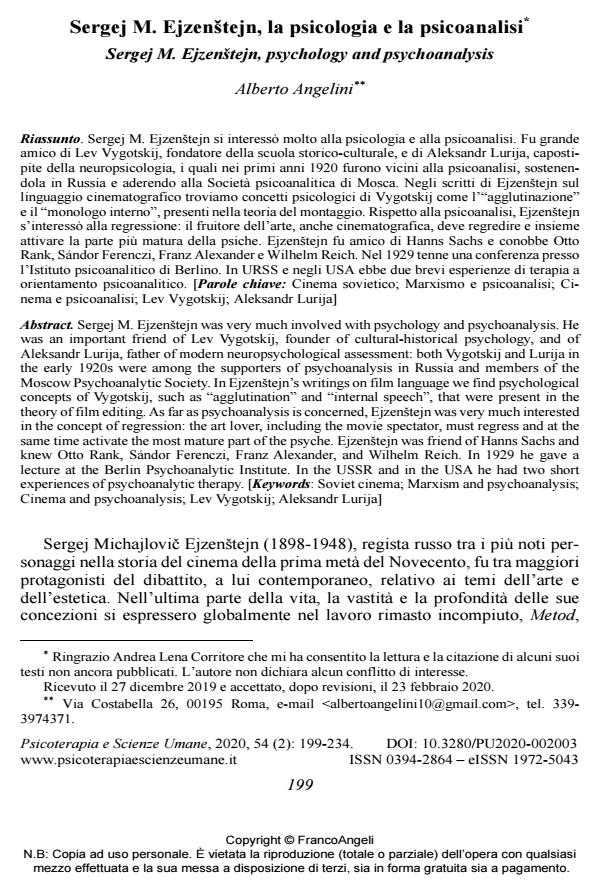Sergej M. Ejzenstejn, psychology and psychoanalysis
Journal title PSICOTERAPIA E SCIENZE UMANE
Author/s Alberto Angelini
Publishing Year 2020 Issue 2020/2 Language Italian
Pages 36 P. 199-234 File size 187 KB
DOI 10.3280/PU2020-002003
DOI is like a bar code for intellectual property: to have more infomation
click here
Below, you can see the article first page
If you want to buy this article in PDF format, you can do it, following the instructions to buy download credits

FrancoAngeli is member of Publishers International Linking Association, Inc (PILA), a not-for-profit association which run the CrossRef service enabling links to and from online scholarly content.
Sergej M. Ejzenstejn was very much involved with psychology and psychoanalysis. He was an important friend of Lev Vygotskij, founder of cultural-historical psychology, and of Aleksandr Lurija, father of modern neuropsychological assessment: both Vygotskij and Lurija in the early 1920s were among the supporters of psychoanalysis in Russia and members of the Moscow Psychoanalytic Society. In Ejzenstejn’s writings on film language we find psychological concepts of Vygotskij, such as "agglutination" and "internal speech", that were present in the theory of film editing. As far as psychoanalysis is concerned, Ejzenstejn was very much interested in the concept of regression: the art lover, including the movie spectator, must regress and at the same time activate the most mature part of the psyche. Ejzenstejn was friend of Hanns Sachs and knew Otto Rank, Sándor Ferenczi, Franz Alexander, and Wilhelm Reich. In 1929 he gave a lecture at the Berlin Psychoanalytic Institute. In the USSR and in the USA he had two short experiences of psychoanalytic therapy.
Keywords: Soviet cinema; Marxism and psychoanalysis; Cinema and psychoanalysis; Lev Vygotskij; Aleksandr Lurija
- Letteratura e psicoanalisi in Russia all’alba del XX secolo (ISBN:978-88-5518-546-2)
Alberto Angelini, Sergej M. Ejzenstejn, la psicologia e la psicoanalisi in "PSICOTERAPIA E SCIENZE UMANE" 2/2020, pp 199-234, DOI: 10.3280/PU2020-002003